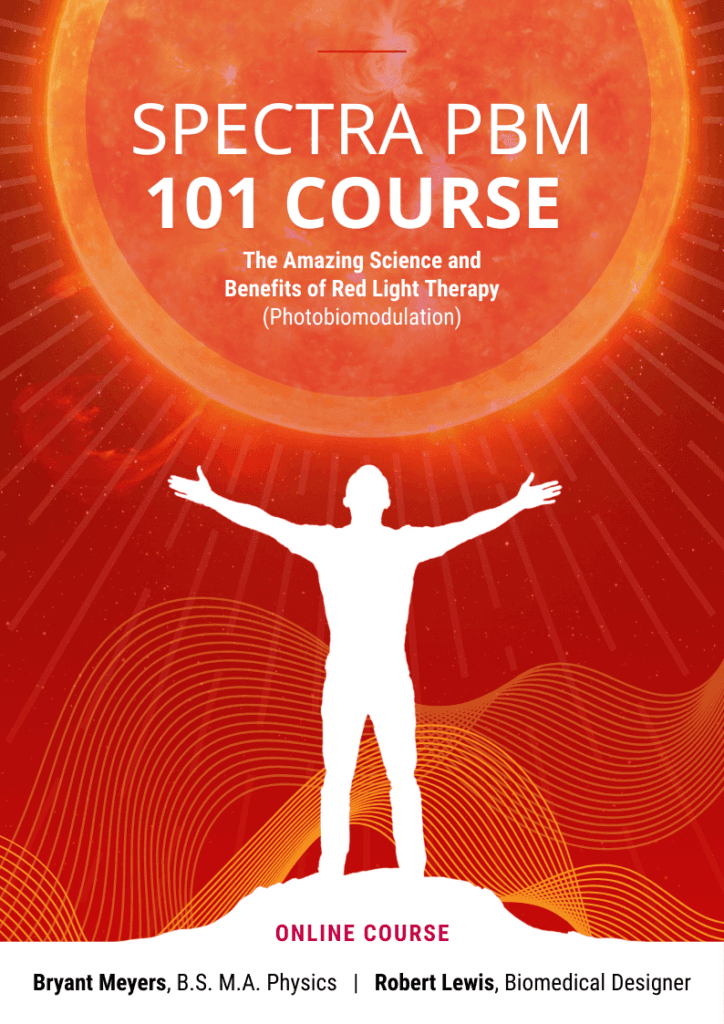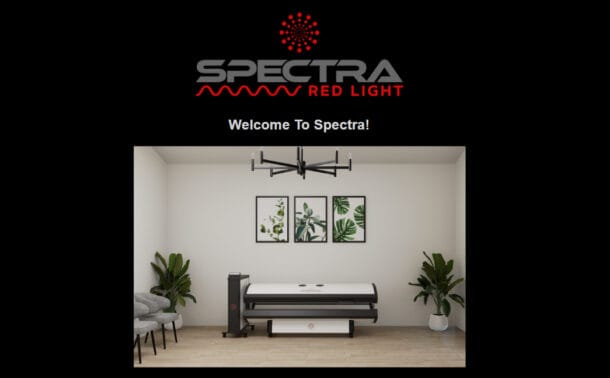Plantar fasciitis is one of the most common causes of heel pain, affecting approximately 1 in 10 people over the course of a lifetime, with over 2 million individuals seeking therapy each year in the United States alone. [1]
This condition involves inflammation, degeneration, or microtearing of the plantar fascia, a thick fibrous band of connective tissue that spans the sole of the foot. It plays a critical role in supporting the medial longitudinal arch and in absorbing the mechanical load of walking and running. When this tissue becomes stressed or overused, it can lead to persistent heel pain, reduced mobility, and significant impairment of daily function.
While conventional approaches like stretching, orthotics, and anti-inflammatory interventions offer partial relief, many individuals are seeking regenerative, non-invasive modalities that work at the cellular level to resolve the underlying dysfunction. Red Light Therapy (RLT), also referred to as Photobiomodulation Therapy (PBMT), has emerged as a powerful, evidence-based option for addressing soft tissue conditions such as plantar fasciitis.
Red Light Therapy utilizes specific wavelengths of visible red and near-infrared light to penetrate the skin and interact with mitochondrial chromophores, primarily cytochrome c oxidase. This interaction enhances adenosine triphosphate (ATP) production, reduces oxidative stress, and modulates inflammatory pathways, fostering an internal environment that promotes healing, relieves pain, and accelerates tissue regeneration.
In this article, we’ll explore how Red Light Therapy supports recovery from plantar fasciitis, examining the physiological mechanisms of action and the science-backed benefits it offers for long-term relief and functional restoration.
What Causes Plantar Fasciitis and Why It Matters
Plantar fasciitis is a degenerative and inflammatory condition that affects the plantar fascia, the thick connective tissue running along the bottom of the foot from the heel bone (calcaneus) to the toes. This structure is vital for maintaining proper foot mechanics, absorbing shock, and supporting the medial longitudinal arch during gait.
The condition typically develops when repetitive stress or biomechanical imbalances lead to microtears in the fascia, triggering localized inflammation, collagen degradation, and eventually, fibrosis if left unresolved. This results in the hallmark symptom: sharp, stabbing pain in the heel, especially with the first steps in the morning or after periods of inactivity.
Several contributing factors can increase the risk of plantar fasciitis, including:
Excessive load from prolonged standing, walking, or running
- Poor foot biomechanics (e.g., overpronation or high arches)
- Inadequate footwear lacking arch support or cushioning
- Tight calf muscles or the Achilles tendon
- Increased body weight or rapid weight gain
Although often labeled as a self-limiting condition, plantar fasciitis can become chronic, lasting months or even years without effective intervention. Persistent inflammation can impair circulation, reduce collagen synthesis, and limit the fascia’s ability to heal properly.
This is where Red Light Therapy (RLT) offers a unique advantage. Unlike passive strategies that only mask symptoms, RLT directly influences the biological processes involved in healing. By stimulating mitochondrial function, enhancing ATP production, and modulating the expression of pro-inflammatory cytokines, Red Light Therapy promotes regeneration of damaged fascia tissue. It helps restore biomechanical integrity and relieve pain without drugs or invasive procedures.
Understanding the root causes of plantar fasciitis highlights the importance of addressing not only the symptoms but also the underlying tissue dysfunction. Through a combination of improved cellular energy metabolism and anti-inflammatory signaling, Red Light Therapy offers a scientifically grounded approach to long-term relief and recovery.
How Red Light Therapy Works and Why It Helps Plantar Fasciitis
Red Light Therapy, also known as Photobiomodulation Therapy (PBMT), is a non-invasive modality that uses specific wavelengths of light to stimulate the body’s natural healing processes at the cellular level. Rather than masking pain, this scientifically validated approach works by enhancing cellular metabolism, reducing inflammation, and accelerating tissue repair, making it particularly well-suited for soft tissue conditions such as plantar fasciitis.
The key to Red Light Therapy’s effectiveness lies in its interaction with mitochondria, the energy-producing organelles found in nearly every cell. When red and near-infrared wavelengths penetrate the skin, they are absorbed by a mitochondrial enzyme known as cytochrome c oxidase (CcO). This light absorption displaces nitric oxide from CcO, enabling more efficient oxygen binding and boosting the synthesis of adenosine triphosphate (ATP), the fundamental energy molecule required for cellular repair and regeneration.
For individuals with plantar fasciitis, this increase in cellular energy leads to several critical physiological effects:
- Enhanced collagen synthesis for structural repair of the plantar fascia
- Reduction in oxidative stress, which helps prevent further cellular damage
- Downregulation of pro-inflammatory cytokines such as TNF-α and IL-6
- Increased microcirculation, supporting better oxygen and nutrient delivery to the damaged tissue
- Modulation of nociceptor activity, contributing to a natural reduction in pain perception
What sets Red Light Therapy apart is its ability to address both the symptomatic pain and the underlying tissue dysfunction associated with plantar fasciitis. As a result, many individuals experience not only faster relief but also more sustainable recovery outcomes.
In essence, RLT provides a non-pharmaceutical, regenerative solution that works with the body’s biology, promoting healing from the inside out, without discomfort, downtime, or side effects.

Scientific and Clinical Evidence Supporting Red Light Therapy for Plantar Fasciitis
The therapeutic application of Red Light Therapy (also referred to as Photobiomodulation Therapy or PBMT) for plantar fasciitis is increasingly supported by a growing body of scientific and clinical research. These studies demonstrate consistent improvements in pain relief, tissue healing, and functional mobility, making RLT a viable option for individuals with chronic heel pain due to plantar fascia dysfunction.
Meta-Analytic Support for Pain Reduction and Functional Improvement
A 2023 meta-analysis titled “Parameters and Effects of Photobiomodulation in Plantar Fasciitis: A Meta-Analysis and Systematic Review” concluded that Red Light Therapy offers statistically significant benefits for those suffering from chronic plantar fasciitis. The authors stated:
“This meta-analysis presents evidence that PBMT is an effective treatment modality to reduce pain and improvement of foot function in patients with chronic PF.” [2]
By analyzing multiple randomized controlled trials (RCTs), the review confirmed that photobiomodulation consistently led to reduced pain scores and enhanced physical function, particularly when optimal dosimetric parameters were applied (such as wavelengths in the red and near-infrared range and energy densities around 4–10 J/cm²).
Positive Effects in Lower Extremity Tendinopathies
Further evidence comes from a systematic review and meta-analysis titled “Efficacy of Low-Level Laser Therapy in Patients with Lower Extremity Tendinopathy or Plantar Fasciitis.” This comprehensive review highlighted the short- and medium-term benefits of PBMT in musculoskeletal disorders affecting the lower limbs. The authors concluded:
“LLLT significantly reduces pain and disability in lower extremity tendinopathy and plantar fasciitis in the short and medium terms.” [3]
The review noted consistent improvements in both pain intensity and disability scores, underscoring the role of Red Light Therapy not only as a pain-relieving intervention but also as a mechanism for restoring mobility and foot function in affected individuals.
Randomized Controlled Trial Confirms Superior Results Over Usual Care Alone
A high-powered RCT titled “Photobiomodulation Therapy Plus Usual Care Is Better than Usual Care Alone for Plantar Fasciitis” investigated the outcomes of PBMT in comparison to standard care. The study employed clinically relevant energy doses (10 J/cm²) using two power settings (10W and 25W), and found:
“PBM therapy at both power levels (i.e., 10W and 25W; both administered to achieve 10 J/cm² dose) resulted in clinically relevant significant reductions in pain, whereas the UC group did not exhibit reductions in pain.” [4]
This study is particularly important because it demonstrates that PBMT provides measurable improvements even when combined with usual care protocols (e.g., stretching, ice, or orthotics), reinforcing its role as a valuable adjunctive therapy.
Taken together, the clinical evidence shows that RLT offers far more than symptomatic relief; it addresses the underlying inflammatory and degenerative processes that define plantar fasciitis. By improving mitochondrial function, enhancing cellular repair, and reducing inflammatory mediators, RLT supports both short-term pain management and long-term functional restoration.
These outcomes are consistent across meta-analyses, systematic reviews, and randomized controlled trials, positioning Red Light Therapy as a scientifically validated, non-invasive solution for one of the most common and persistent musculoskeletal conditions affecting the foot.

Benefits of Red Light Therapy for Plantar Fasciitis
Red Light Therapy offers a range of scientifically supported benefits for individuals suffering from plantar fasciitis. These benefits are driven by specific biological mechanisms that occur when light energy penetrates the tissues of the foot and interacts with cellular structures. Below are the key advantages:
Accelerated Tissue Repair and Regeneration
Red light wavelengths stimulate cytochrome c oxidase (CcO) in the mitochondria, leading to an increase in ATP (adenosine triphosphate) production. ATP is the cellular energy currency that fuels repair processes, aiding in the regeneration of microtears in the plantar fascia.
Reduction in Inflammation
Red and near-infrared light has been shown to modulate the inflammatory response by decreasing pro-inflammatory cytokines such as interleukin-6 (IL-6), tumor necrosis factor-alpha (TNF-α), and prostaglandin E2 (PGE2). This results in less swelling, reduced tissue stress, and improved comfort during movement.
Natural Pain Relief
RLT has an analgesic effect that reduces the sensation of pain without pharmaceuticals. It does this by modulating nerve conduction, reducing oxidative stress, and affecting transient receptor potential (TRPV1) channels involved in nociceptive signaling. The therapy may also activate endogenous opioid receptors, further alleviating pain.
Enhanced Collagen Production and Fascia Strengthening
The therapy promotes fibroblast activity and Type I collagen synthesis, which are essential for the repair and strengthening of connective tissue. This leads to improved elasticity and durability of the plantar fascia, helping to prevent future injury.
Improved Circulation and Cellular Oxygenation
Red Light Therapy induces vasodilation and enhances local microcirculation, increasing oxygen delivery and the removal of metabolic waste from the affected area. Better blood flow accelerates healing and supports overall tissue health.

Plantar fasciitis is more than just a painful foot condition, it’s a biomechanical and inflammatory challenge that, if left unaddressed, can significantly impair daily function and long-term mobility. While conventional approaches often focus on symptom management, Red Light Therapy (RLT) offers a regenerative, non-invasive modality that targets the underlying biological dysfunctions responsible for persistent heel pain.
To support users in achieving optimal dosing, we encourage the use of our RLT Dose Calculator, which is specifically designed to help users tailor their sessions.
By delivering specific wavelengths of red and near-infrared light, Red Light Therapy stimulates the mitochondrial respiratory chain, particularly the enzyme cytochrome c oxidase. This photonic interaction enhances ATP (adenosine triphosphate) production, fueling cellular metabolism, tissue repair, and collagen remodeling within the plantar fascia.
Additionally, RLT modulates the local inflammatory environment by downregulating pro-inflammatory mediators like TNF-α, IL-6, and PGE2, while supporting vasodilation and improved microcirculation. These effects contribute to:
- Reduction in oxidative stress
- Restoration of biomechanical integrity
- Natural pain relief via neural and biochemical pathways
- Accelerated regeneration of connective tissue
Scientific literature, including randomized controlled trials and meta-analyses, supports the use of photobiomodulation as an effective modality for reducing pain, improving foot function, and facilitating long-term recovery in individuals with plantar fasciitis.
Ultimately, Red Light Therapy empowers the body’s own healing processes, offering a safe, evidence-based, and drug-free solution for those seeking to move beyond pain and toward lasting recovery.
References
[1] Buchbinder, R. (2004). Plantar fasciitis. New England Journal of Medicine, 350(21), 2159–2166. https://doi.org/10.1056/nejmcp032745
[2] Dos Santos SA, Sampaio LM, Caires JR, Fernandes GHC, Marsico A, Serra AJ, Leal-Junior EC, de Carvalho PTC. Parameters and Effects of Photobiomodulation in Plantar Fasciitis: A Meta-Analysis and Systematic Review. Photobiomodul Photomed Laser Surg. 2019 Jun;37(6):327-335. doi: 10.1089/photob.2018.4588. Epub 2019 May 20. PMID: 31107161.
[3] Naterstad IF, Joensen J, Bjordal JM, Couppé C, Lopes-Martins RAB, Stausholm MB. Efficacy of low-level laser therapy in patients with lower extremity tendinopathy or plantar fasciitis: systematic review and meta-analysis of randomised controlled trials. BMJ Open. 2022 Sep 28;12(9):e059479. doi: 10.1136/bmjopen-2021-059479. PMID: 36171024; PMCID: PMC9528593.
[4] Ketz AK, Anders J, Orina J, Garner B, Hull M, Koreerat N, Sorensen J, Turner C, Johnson J. Photobiomodulation Therapy Plus Usual Care Is Better than Usual Care Alone for Plantar Fasciitis: A Randomized Controlled Trial. Int J Sports Phys Ther. 2024 Jan 2;19(1):1438-1453. doi: 10.26603/001c.90589. PMID: 38179590; PMCID: PMC10761604.


